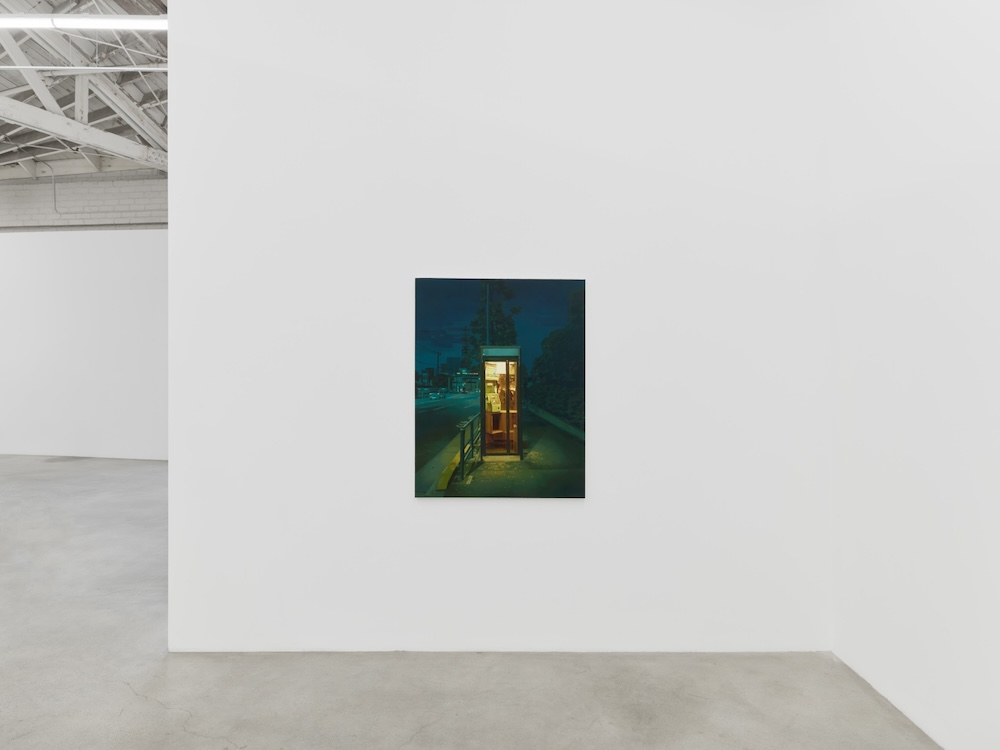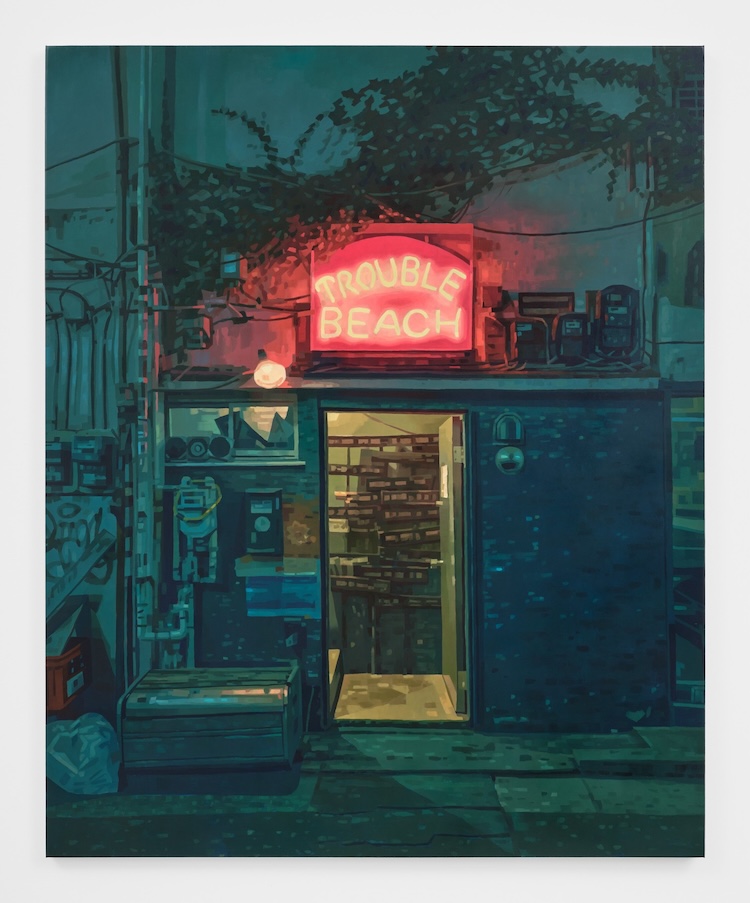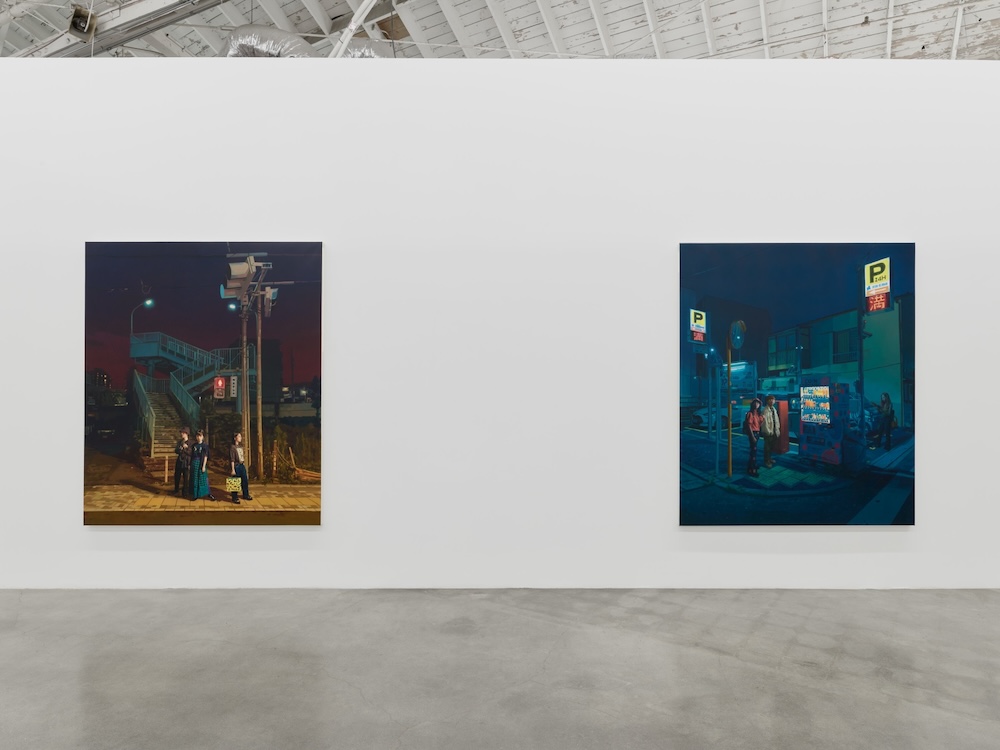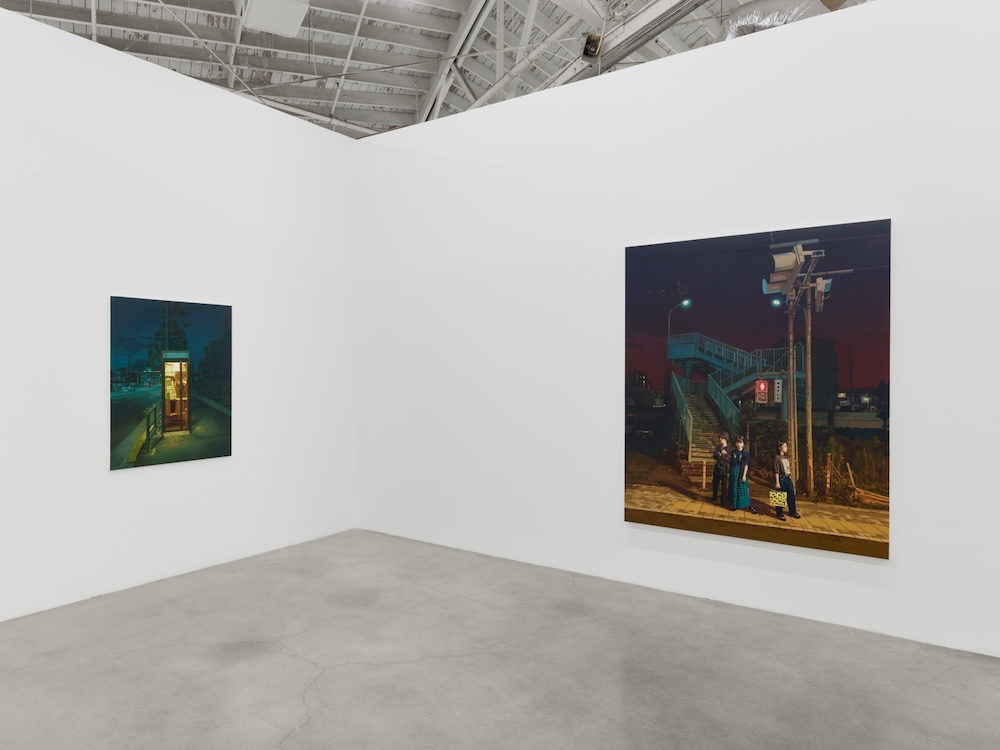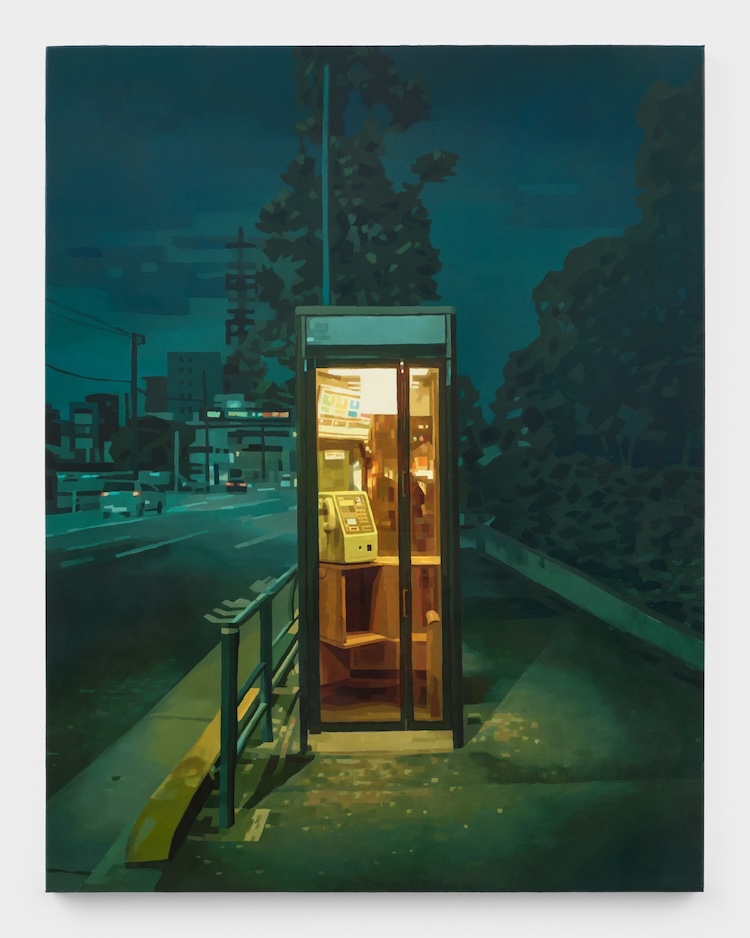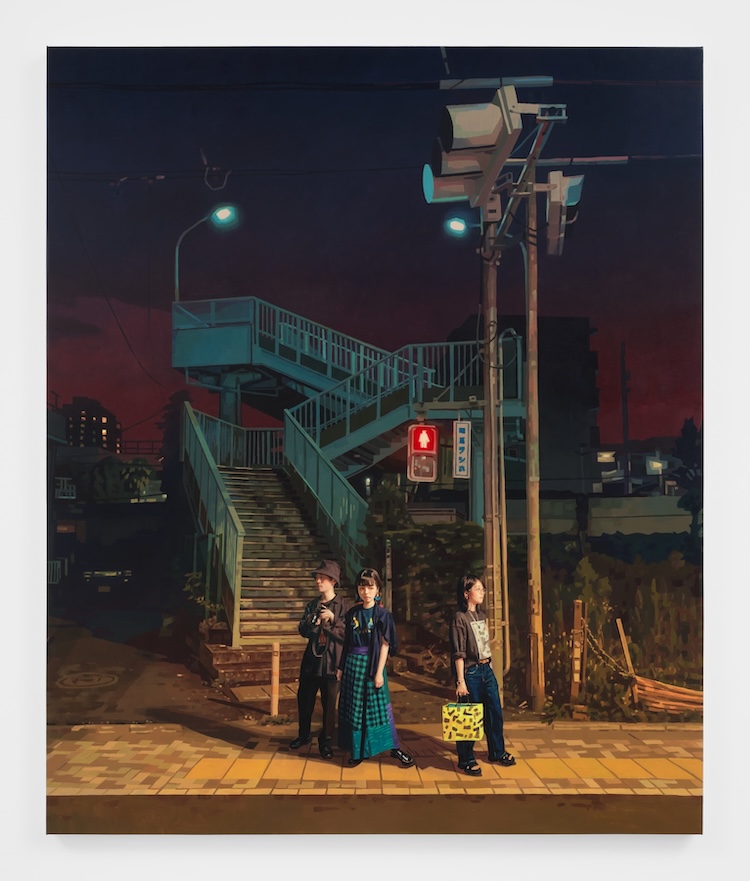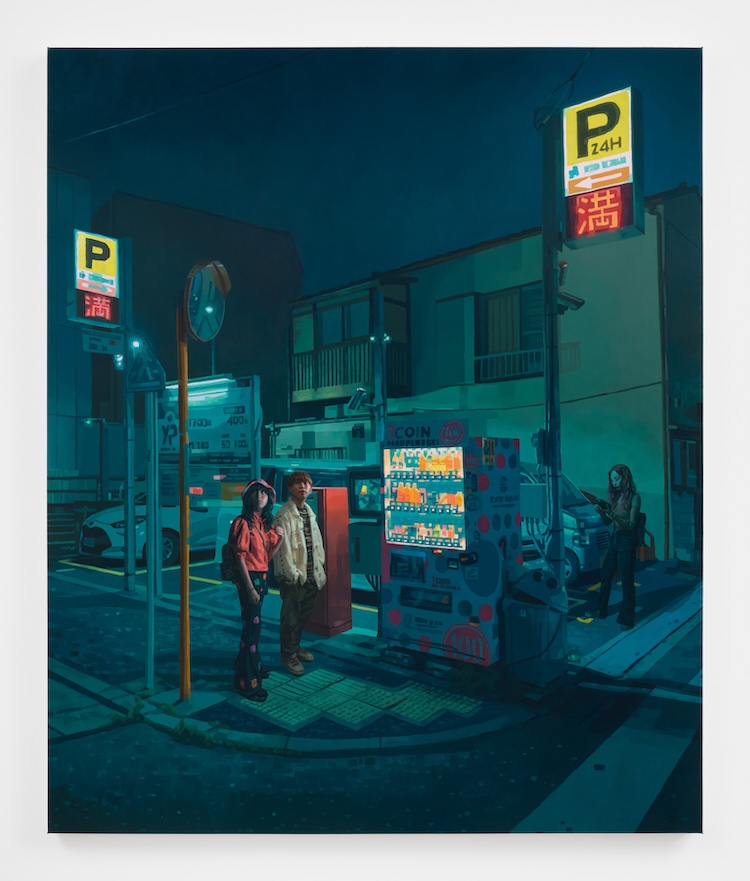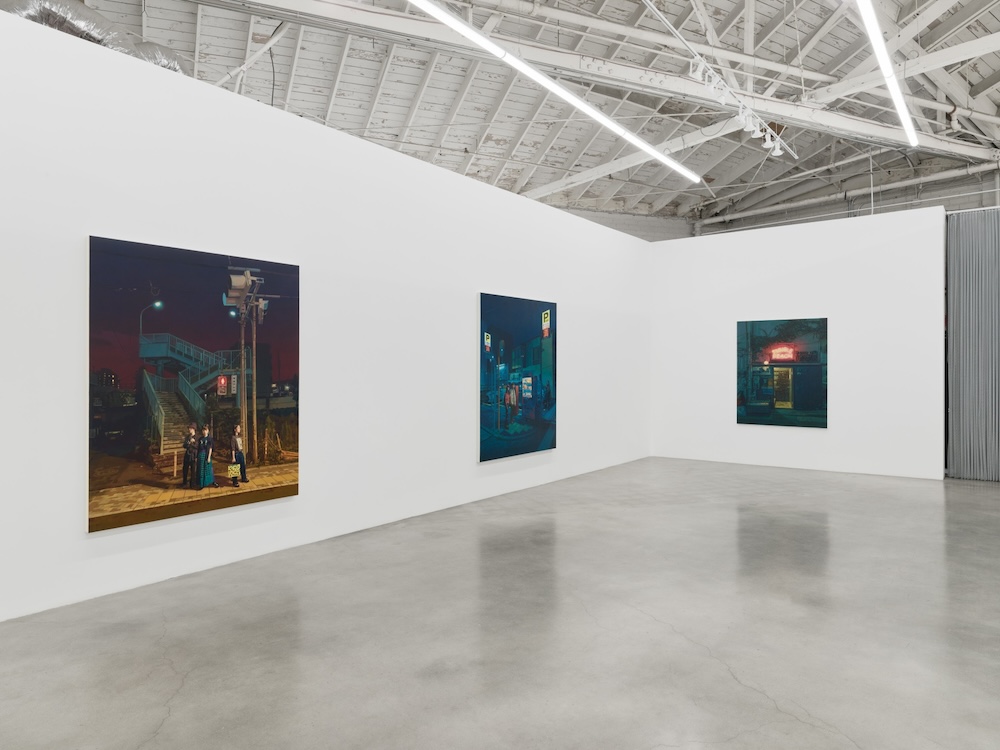Night Gallery is pleased to announce as we didn’t know it, a presentation of new paintings by Keita Morimoto. This is the artist’s first solo exhibition with the gallery. Keita Morimoto is both a painter and a virtuoso visual dramaturge; his acrylics and oils on panel and linen imbue ordinary, ephemeral moments of urban life with cinematic grandeur. The nocturnal cityscapes and portraits in as we didn’t know it are akin to stills captured from a single, atmospheric film or cropped sections along a much larger, continuous tableau vivant. The compositions feature moments of stillness while suggesting that action and revelation are imminent. Carefully calibrating between the familiar and the strange, the apparent and the hidden, the artist presses against the constraints of realism to engage the sublimity and meaning just beneath our world’s glossy veneer.
Morimoto grounds his work in the physical world. His process begins on the twilit streets of Tokyo, his home since 2022. The artist records the darkening city with his camera, snapping adumbral buildings, clusters of young people, the ambient glow of fluorescent lights, and the sundry fixtures of a modern metropolis emerging from mottled shadows. Morimoto practices a democratic form of observation that trades conventional aesthetic hierarchies for ecstatic, omnivorous consumption—he attends as generously to exposed plumbing, akimbo trash lids, and detritus as he does to florid flurries of clouds, rakish apparel on pedestrians, and verdant ivy embroidering a concrete building.
The artist then creates his collaged reference images by using photo editing software to manipulate contrast, color, and composition. As physical tools such as brushes and palette knives leave behind evidence of the maker’s process and hand, Morimoto’s technological interventions find their preservation on his surfaces, which feature convincing pixelated effects. His paintings appear composed entirely of squares and rectangles that fracture into tiny segments. They either highlight details or form smooth, lambent planes of color. Levels of resolution oscillate from blurry to lucid, and tonal gradients rarely fluctuate from the inky indigo of nightfall. These elements throw the artifice of the picture plane and the instability of surface appearances into stark relief. The dynamic tension between exposure and obscuration generates suspense and premonition, lending the artist’s frozen figures a sense of climactic hesitation.
By pixelating his compositions, Morimoto submits traditional techniques, canonical allusions, and a robust array of artistic influences to a multifarious form of digital alchemy. He translates the noir palettes of Alfred Hitchcock’s films, the evocative atmospheres of Edward Hopper’s cityscapes, the emotional gravitas of Symbolist canvases, and the dramatic plays of light and shadow across Dutch Golden Age paintings into the graphic squares unique to our contemporary era.
Striking chiaroscuro shading exalts an empty phone booth in Isolated Echoes; twin vending machines sync with the stark, geometric architecture of a skyline in Chasing Blues; and a woman’s translucent profile emits a somber, lunar radiance in Pearls. Morimoto collapses the distance between art historical past and digital present, transforming once familiar figures, objects, and motifs into uncanny images that demand not only the viewer’s attention but their active participation.
The artist doesn’t undermine the quotidian so much as bend perception. With a keen understanding of theatrical illusion and narrative suspense, he illuminates the transcendent qualities of the mundane and effects evanescent yet profound epiphanies of (extra)ordinary life. —Tara Anne Dalbow



